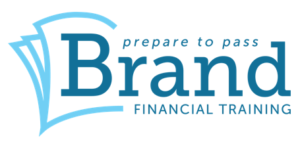The Brand Financial Training team consider what examination takers need to know about the benefits of diversification within an investment portfolio.
We are often told that diversification is the key to reducing risk in a portfolio. We know we should not have ‘all our eggs in one basket’, so investment portfolios should ideally be spread, according to our needs and risk profile, amongst the asset classes of cash, fixed interest securities, shares and property and perhaps some of the more alternative investments as well.
When considering diversification, we need to evaluate how much loss someone is able to tolerate with their investments (without panicking and wanting to sell) and also how long someone has before they need access to their portfolio. This will help when deciding which assets should be held and in what proportion.
Diversification within asset classes is also important; for example holding different company shares in different sectors, diversifying across international markets and also holding shares in different sized companies. Similarly, with fixed interest investments, investment grade, corporate and government bonds should be considered.
Correlation is a measure of dependency between asset classes or investments and is a key part of diversification. Correlation varies between +1 and -1.
Where assets are positively correlated, their returns move in the same direction (either up or down). Where assets are negatively correlated, their returns move in opposite directions. No correlation means there is no dependency, so each investment very much does its own thing.
The most effective diversification comes from investments that are negatively correlated; the theory being that if one section of the portfolio isn’t performing well during current economic conditions, then other investments may compensate for any losses and keep a neutral or smoother overall performance.
Perfectly negatively correlated assets move in the opposite direction to each other by the same amount. If investments can be found that work like this, they would provide 100% diversification. If there’s no variance then there’s no risk. The investor cannot lose but also remember they cannot win as a gain would be cancelled out by the loss and vice versa.
Over the long term, cash has a low correlation with shares and property; shares have a low correlation with fixed interest securities, whereas property has a higher correlation with shares.
With no correlation, the movement of two investments’ prices are totally unrelated, i.e. they are independent of each other so having a few investments with near on zero correlation would also provide diversification.
This table shows the correlation between three assets.
| Asset X | Asset Y | Asset Z | |
| Asset X | 1.0 | +0.8 | -0.2 |
| Asset Y | +0.8 | 1.0 | +0.3 |
| Asset Z | -0.2 | +0.3 | 1.0 |
This tells us that assets X and Y have a relatively high correlation (+0.8). If asset X were to rise by, say, 8%, then asset Y would rise by 80% of that figure, i.e. by 6.4%. Assets X and Z are negatively correlated (-0.2) and assets Y and Z have a low correlation (+0.3).
The main benefits of diversification are in the risk-adjusted returns, which can be measured by the Sharpe ratio. This ratio identifies how many units of return is earned per unit of risk taken. The higher the ratio, the greater the return has been relative to the amount of risk that was taken. It’s calculated by working out a portfolio’s excess return (i.e. the return on the investment less the risk free return) divided by its volatility as measured by its standard deviation.
If portfolio X has an expected return of 10% over the next year and portfolio Y has an expected return of 12% over the same period, we would probably choose portfolio Y for the extra return. However, if we consider the risk that was taken to achieve those returns, this will give us a wider view.
Let’s say portfolio Y has a standard deviation of 7% and portfolio X has a standard deviation of 4%.
If the risk free return is 1%, then we can calculate the Sharpe ratio for each of them as follows:
- Portfolio X = 10 – 1/4 = Sharpe ratio of 2.25
- Portfolio Y = 12 – 1 /7 = Sharpe ratio of 1.57
Portfolio Y has taken more risk (we know this because its standard deviation is higher than that of portfolio X), so its Sharpe ratio is lower. With a Sharpe ratio of 2.25, portfolio X has provided a better return on a risk-adjusted basis. The portfolio earned a 2.25% return above the risk-free rate for each unit of risk that was taken.
A properly diversified portfolio can therefore help an investor earn a good return whilst taking on proportionately less risk.
About Brand Financial Training
Brand Financial Training provides a variety of immediately accessible free and paid learning resources to help candidates pass their CII exams. Their resource range ensures there is something that suits every style of learning including mock papers, calculation workbooks, videos, audio masterclasses, study notes and more. Visit Brand Financial Training at https://brandft.co.uk
This article was first published in the December 2022 issue of Professional Paraplanner.
[Main image: clay-banks-odoykoPOF3E-unsplash]






























